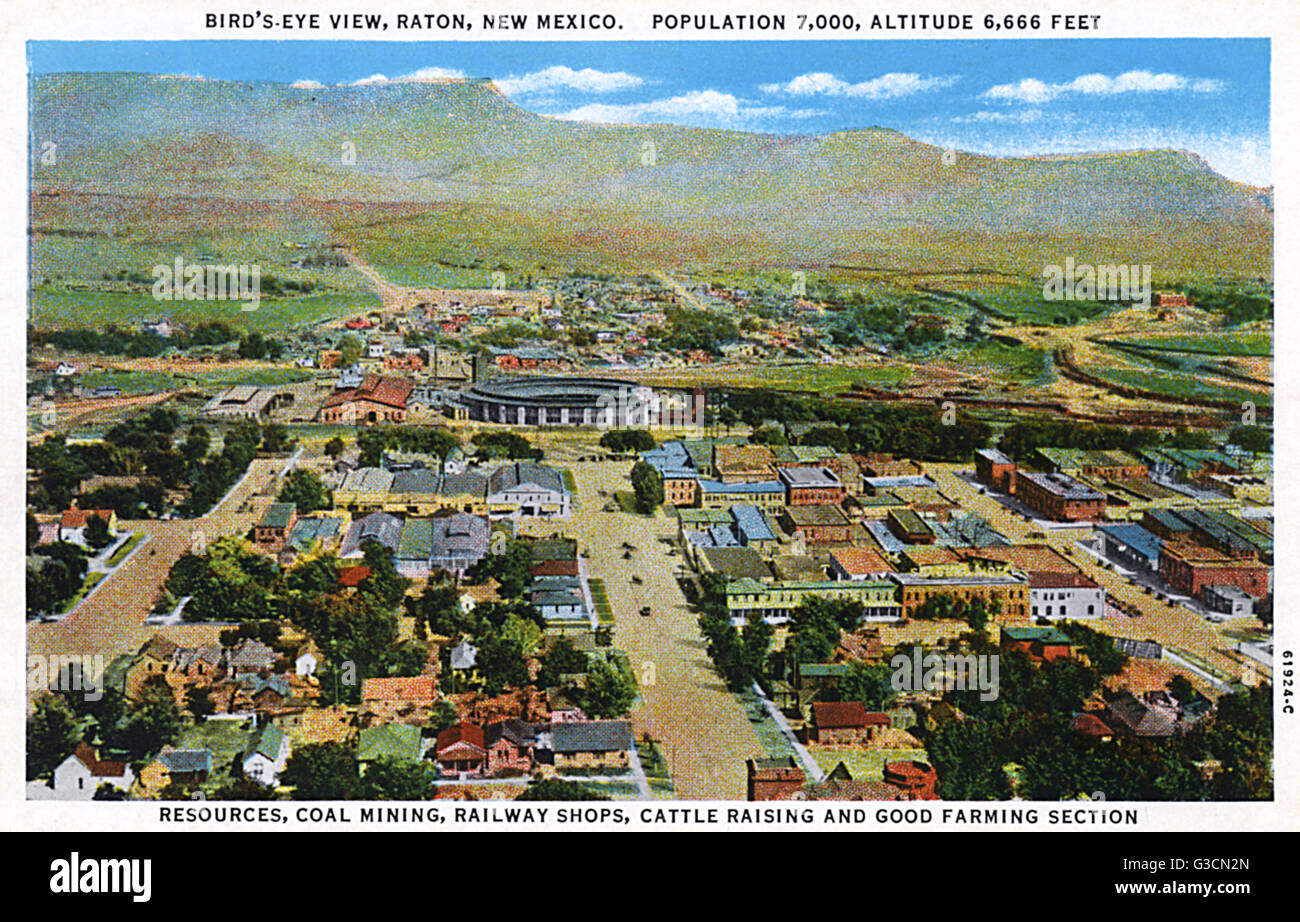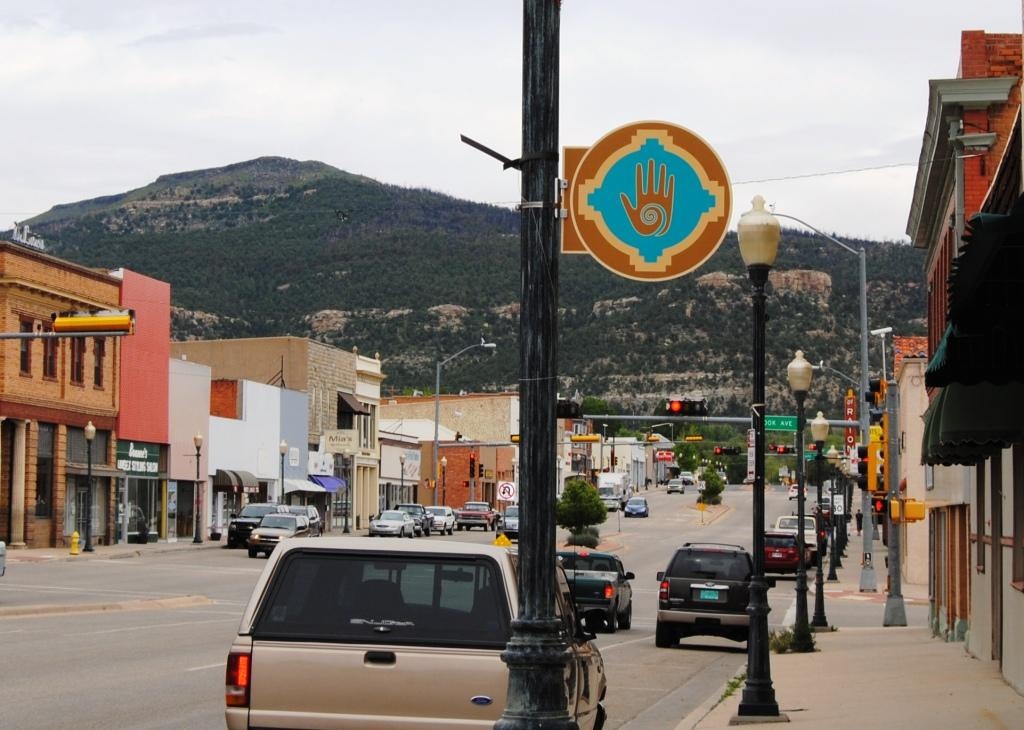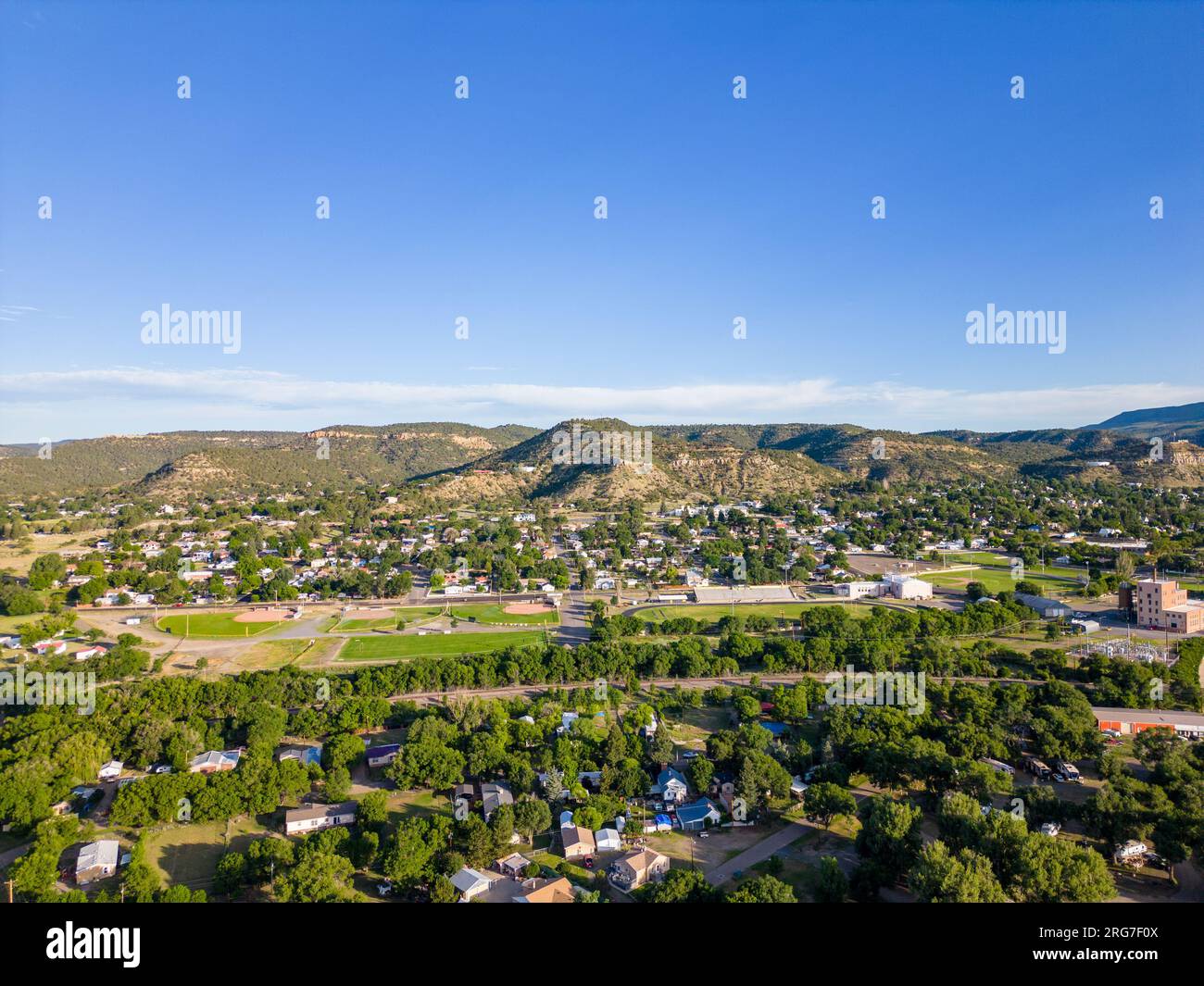
Raton, New Mexico: A Crossroads Forged in Fire and Resilience
Nestled high in the northeastern corner of New Mexico, just a few miles south of the Colorado border, lies Raton – a town whose very name evokes the rugged, untamed spirit of the American West. Perched at an elevation of 6,666 feet, at the base of the iconic Raton Pass, this community has, for centuries, served as a vital crossroads. From ancient Native American trails to the arduous Santa Fe Trail, from the roaring days of coal and rail to its current incarnation as a gateway to stunning natural beauty, Raton is a testament to endurance, reinvention, and the deep-seated pride of a place shaped by extraordinary forces.
The journey to understand Raton begins, inevitably, with its geography. The town is situated in a dramatic landscape where the vast high plains of eastern New Mexico collide with the rugged foothills of the Sangre de Cristo Mountains. This convergence created the legendary Raton Pass, a formidable natural barrier that rises to 7,834 feet (2,388 meters). For millennia, it was a challenging but necessary passage. Native American tribes, including the Ute and Apache, traversed these lands. Later, in the 19th century, it became one of the most dreaded segments of the Santa Fe Trail, the bustling international trade route connecting Missouri to Santa Fe. Wagons groaned, horses strained, and men battled the steep grades and harsh weather, making the pass a true test of grit and determination.
"The pass was a beast," recounts local historian Elena Rodriguez, her voice echoing the reverence for the past common among Raton residents. "Imagine those early traders, pushing through snow in winter or blistering heat in summer, knowing that every mile gained was a triumph. Raton, even before it was a town, was a promise of respite or the challenge ahead."

The modern town of Raton, however, truly came into being with the advent of the railroad. In 1879, the Atchison, Topeka and Santa Fe (ATSF) Railroad, in a famous "race to the pass" against the Denver and Rio Grande, managed to secure the route through Raton Pass. This engineering marvel, involving tunnels and steep grades, was a game-changer. Suddenly, what took weeks by wagon could be traversed in hours by train. Raton, strategically positioned at the base of the pass, exploded into a boomtown.
Coal was the other critical ingredient in Raton’s rapid growth. The surrounding hills were rich in high-quality bituminous coal, particularly coking coal, essential for steel production. Mines like the ones in nearby Dawson (a famous ghost town now) and others throughout the Raton Basin employed thousands, drawing immigrants from all corners of the globe – Italians, Slavs, Mexicans, and many more – all seeking a better life in the harsh but promising New Mexico territory. Raton became a bustling hub, a melting pot of cultures, languages, and dreams. Its downtown, still remarkably preserved, boasts impressive brick and stone buildings, a testament to the wealth and ambition of that era.
This period was not without its conflicts. Raton was at the heart of the infamous Maxwell Land Grant, a colossal 1.7-million-acre Spanish land grant that encompassed vast portions of northeastern New Mexico and southern Colorado. The grant’s ownership disputes led to decades of violence, legal battles, and a complex legacy of land speculation, squatters’ rights, and frontier justice, involving legendary figures like Kit Carson and the notorious Clay Allison. The raw, untamed nature of the West was very much alive in Raton.
The golden age of coal and rail, however, was not destined to last forever. The mid-20th century brought profound changes. Demand for coal declined as other energy sources emerged, and mechanization reduced the need for manual labor. The railroads, once the lifeblood of the nation, saw passenger traffic dwindle with the rise of the automobile and air travel. Raton, like many other resource-dependent towns, faced a severe economic downturn. Mines closed, jobs vanished, and the population, which had peaked at over 8,000, began a steady decline.
"It was tough," recalls Robert ‘Bobby’ Sanchez, a retired miner whose family has lived in Raton for generations. "My father worked the mines, his father before him. When they started closing, it felt like the heart was being ripped out of the town. We lost a lot of people, good people, who had to go elsewhere for work."
But Raton, ever the survivor, began to look inward and outward for new opportunities. The town’s enduring assets – its history, its natural beauty, and its strategic location – became the pillars of a new identity centered on tourism and outdoor recreation.
Today, Raton serves as a primary gateway to some of New Mexico’s most spectacular natural wonders. Just a short drive southeast lies Capulin Volcano National Monument, a perfectly preserved, dormant cinder cone volcano that last erupted around 60,000 years ago. Visitors can drive a paved road all the way to the rim, where a short trail offers breathtaking panoramic views stretching for hundreds of miles across four states. The dark, fertile volcanic soil supports a unique ecosystem, and the feeling of standing atop an ancient volcano is both humbling and awe-inspiring.
To the northeast, Sugarite Canyon State Park offers a completely different kind of natural escape. Nestled in a verdant canyon, the park boasts two pristine lakes – Lake Maloya and Lake Alice – popular for fishing, boating, and paddleboarding. Miles of hiking and biking trails wind through ponderosa pine forests, past remnants of old coal mining operations, and up to scenic overlooks. In winter, it transforms into a cross-country skiing and snowshoeing paradise. Wildlife abounds, from black bears and mountain lions to diverse bird species.

Perhaps one of Raton’s most significant, though often unseen, economic drivers is its proximity to Philmont Scout Ranch. Located just west of Cimarron, Philmont is the Boy Scouts of America’s largest high-adventure base, attracting over 20,000 Scouts and leaders each summer. While Cimarron is the official gateway, Raton benefits immensely from the thousands of families who pass through, staying in hotels, dining in restaurants, and stocking up on supplies before or after their wilderness treks. This steady stream of visitors provides a crucial boost to the local economy, particularly during the summer months.
Beyond its natural allure, Raton also boasts a vibrant cultural heart. The Shuler Theater, a beautifully restored 1915 opera house, stands as a beacon of artistic expression. Often called the "Broadway of the Rockies," the Shuler has hosted everything from vaudeville acts and silent films to touring theatrical productions and local community plays. Its ornate interior and rich history make it a must-visit, and its continued operation is a testament to the town’s commitment to arts and culture.
"The Shuler isn’t just a building; it’s the town’s living room," says Sarah Chen, a volunteer at the theater. "It’s where we gather, where we laugh, where we share stories. It connects us to our past and inspires us for the future. It’s amazing what a small town can do to keep such a grand place alive."
Raton’s downtown area, a designated New Mexico MainStreet community, is undergoing continuous revitalization efforts. Historic buildings are being preserved and repurposed, new businesses are slowly emerging, and public art projects add splashes of color and creativity. There’s a palpable sense of pride in the architecture and the stories etched into every brick.
The challenges, however, persist. Like many rural communities, Raton grapples with issues of economic diversity, attracting and retaining younger generations, and accessing adequate healthcare and services. The town’s remote location, while part of its charm, can also be an obstacle. Yet, through it all, the spirit of resilience that has defined Raton for centuries endures.
"We’re not just a place you drive through on I-25," insists Mayor James Baca. "We’re a community with deep roots, a rich history, and a future we’re actively building. We want people to stop, explore, and feel the unique energy of Raton. We’re open for business, for adventure, and for those who appreciate a genuine piece of the American West."
From the grueling passages of the Santa Fe Trail to the thundering trains carrying coal, from the boom-and-bust cycles to its modern embrace of nature and heritage, Raton, New Mexico, remains a testament to the enduring human spirit. It is a town that has been forged by fire – both literal and metaphorical – and has emerged, time and again, with a distinct character and an unwavering resolve. For those who seek a genuine experience of history, breathtaking landscapes, and the quiet dignity of a community that refuses to give up, Raton stands ready, a welcoming crossroads where the past is always present, and the future is being shaped, one resilient step at a time.


